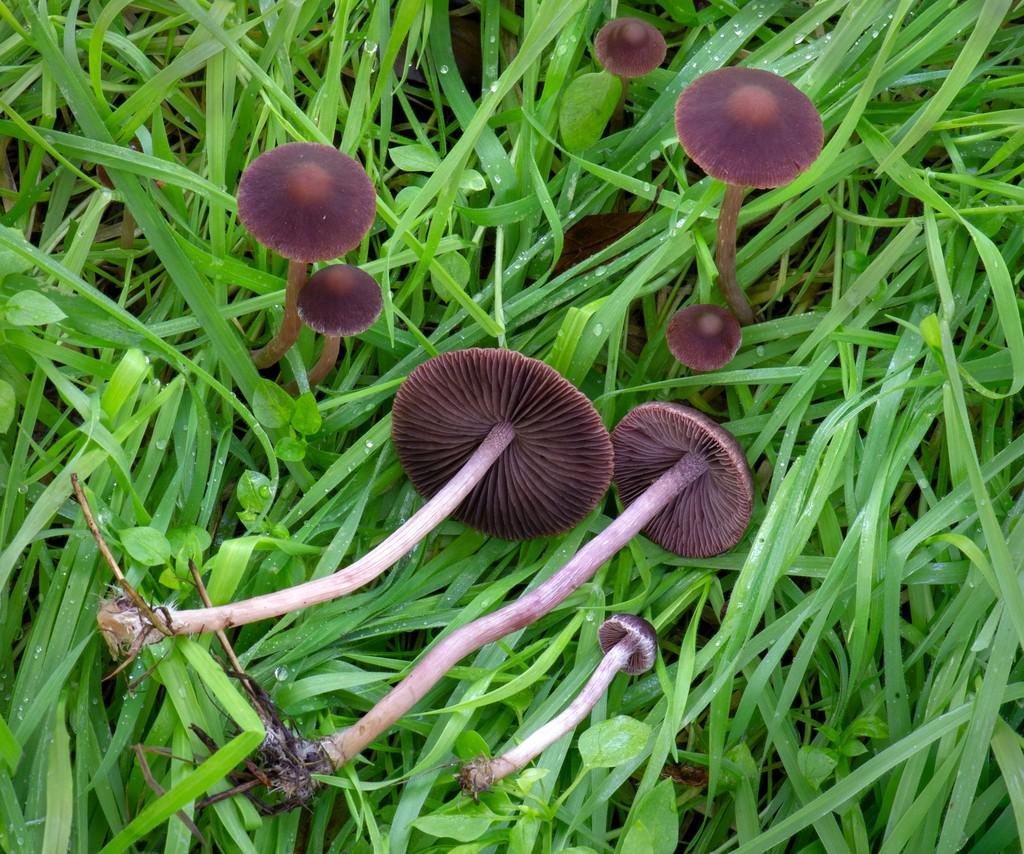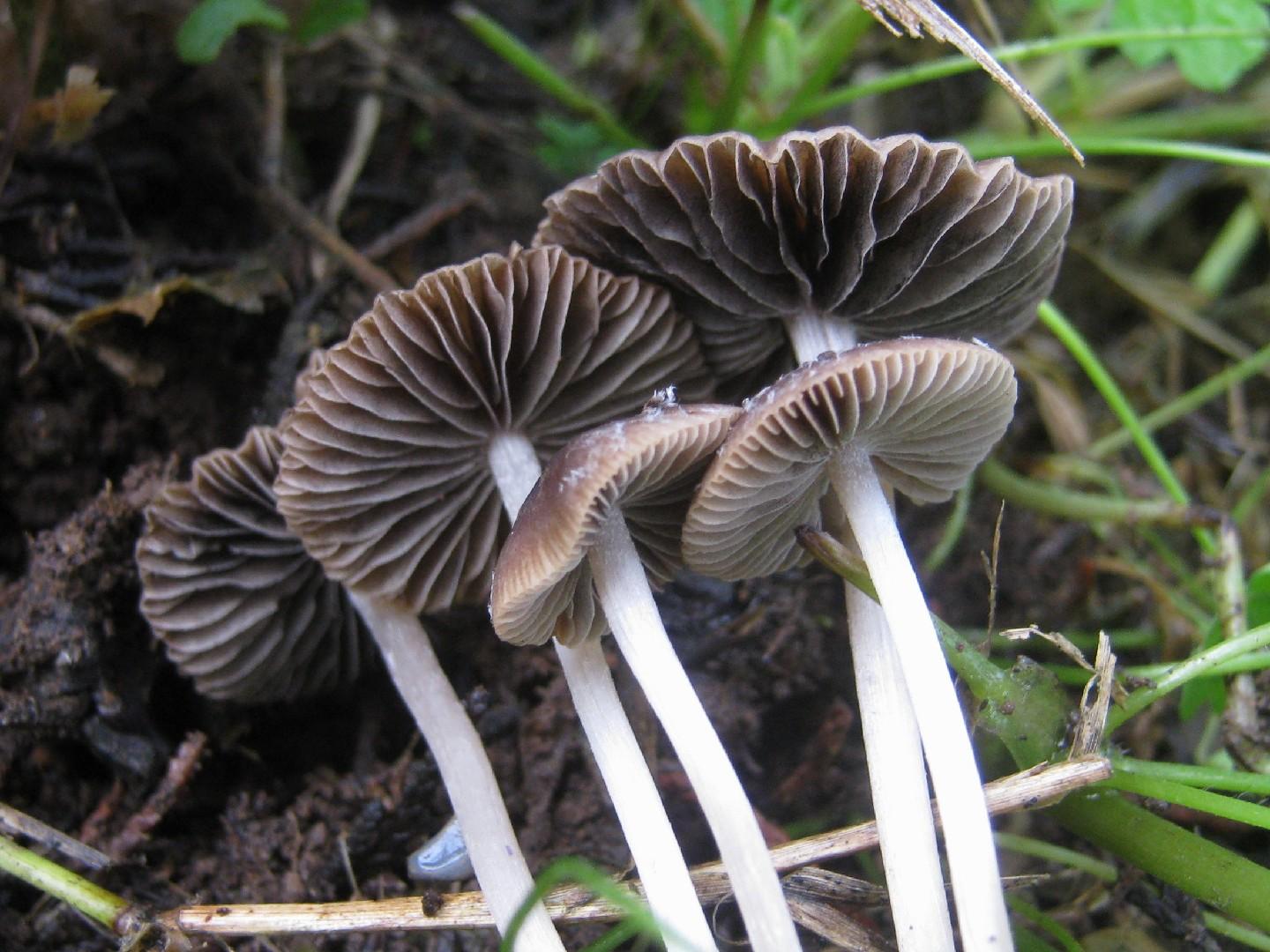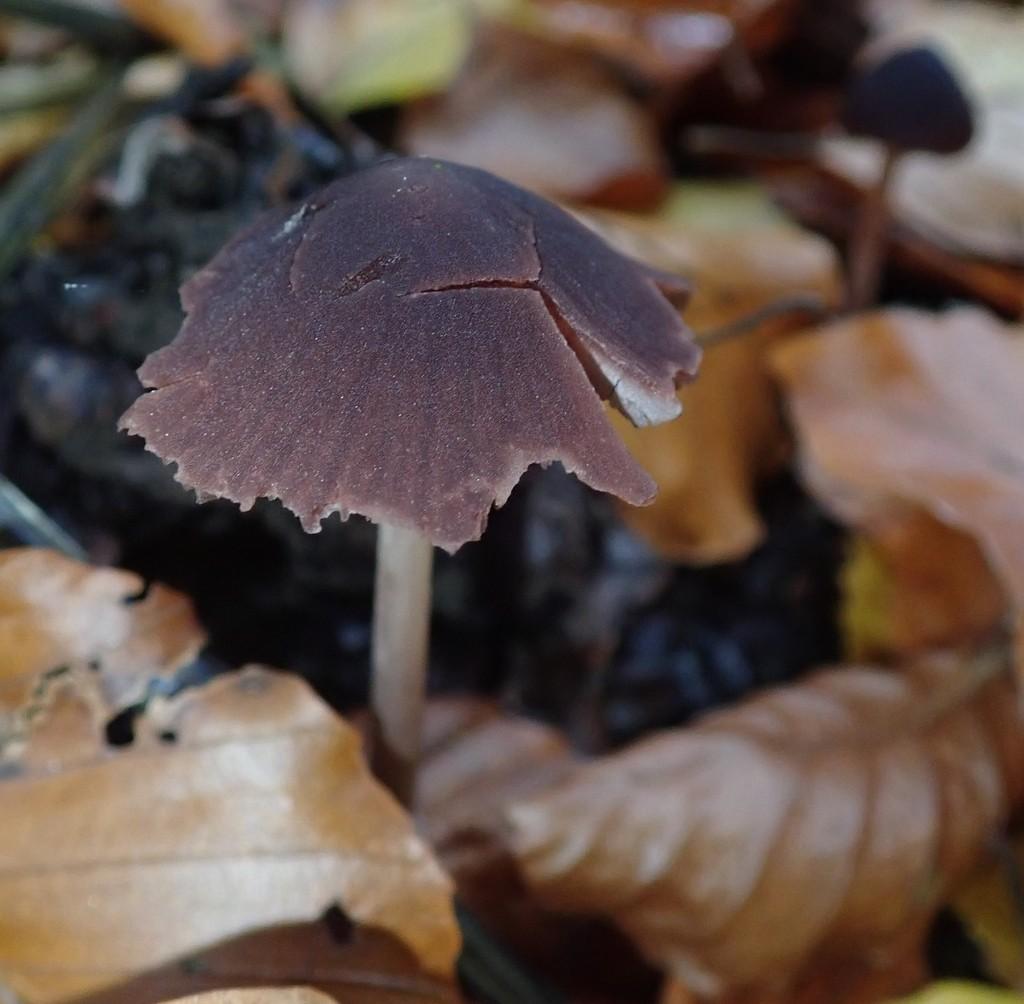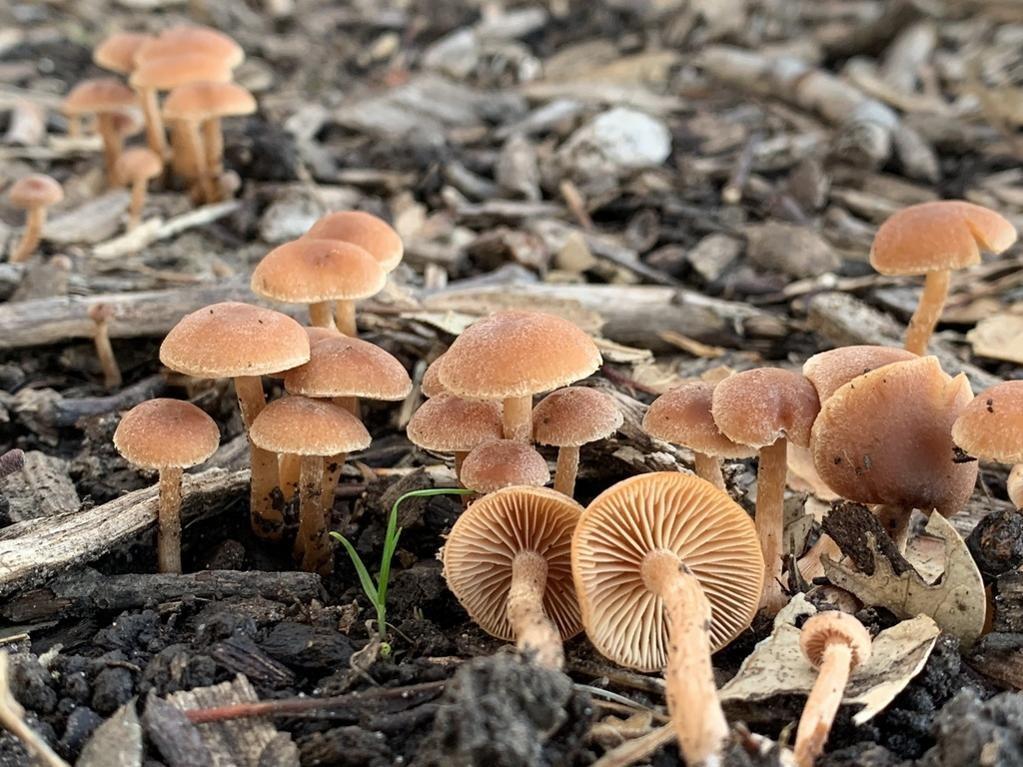



Maroon brittlestem
Psathyrella bipellis
A species of Brittlestems.
Psathyrella bipellis, commonly known as the maroon brittlestem, is a moderately sized fungus found in temperate hardwood environments, including forests and sometimes residential areas. Its most notable characteristic is its cap, typically exhibiting a reddish-brown or purplish hue, consistent with its common moniker.
Attributes of Maroon brittlestem
Cap Diameter
2 - 6 cm
Height
5 - 12 cm
Cap
Cap 1 - 5 cm; convex, broadly conical, nearly flat; purple, brown; bald; margin finely lined
Cap Shape
Convex, Bell-shaped, Flat
Cap Surfaces
Smooth, Visible lines or stripes, Fibrillose-scaly
Gills
Adnexed; close, distant; purplish, brown to dark gray; with whitish edges
Gill Attachment
Attached
Stem
Stem 4.5 - 10 cm long, up to 5 mm thick; equal; pinkish to purplish, whitish; fragile, bald or very finely silky
Stem Shapes
Cylindrical
Stem Surfaces
Smooth to slightly fibrous
Flesh
Thin; fragile; purplish in the cap
Ring
Ringless
Spore Print Color
Purplish brown to purplish black, reddish brown
Odor
Variable, occasionally fruity, generally not distinctive.
Body Color
BrownRedWhitePurplePink
Flesh Bruises
The flesh or milk does not discolor when bruised or cut.
Growth Form
Scattered, Gregarious
Nutrient Gathering
Saprophytic
Substrate
On soil, Dead Woods, Wood Chips or Mulch
You can find Maroon brittlestem by these plants
European beech, Hawthorns
Occurence Habitats
Deciduous Woodland, Mixed Woodland, Disturbed Lands
Species Status
Widely distributed
Endangered Species
No
Scientific Classification of Maroon brittlestem
Phylum
Club fungi
Class
Mushroom-forming fungi
Order
Gilled fungi
Family
Coprinaceae
Genus
Brittlestems
Toxicity and Edibility of Maroon brittlestem
Is Maroon brittlestem Toxic?
Toxicity information is not available for this mushroom. Always consult with an expert before consuming any wild mushrooms.
Is Maroon brittlestem Toxic to Dogs?
Maroon brittlestem can be dangerous to dogs. If your pet has consumed this mushroom, seek immediate veterinary attention. Symptoms may vary, but early intervention is crucial for the best outcome.
